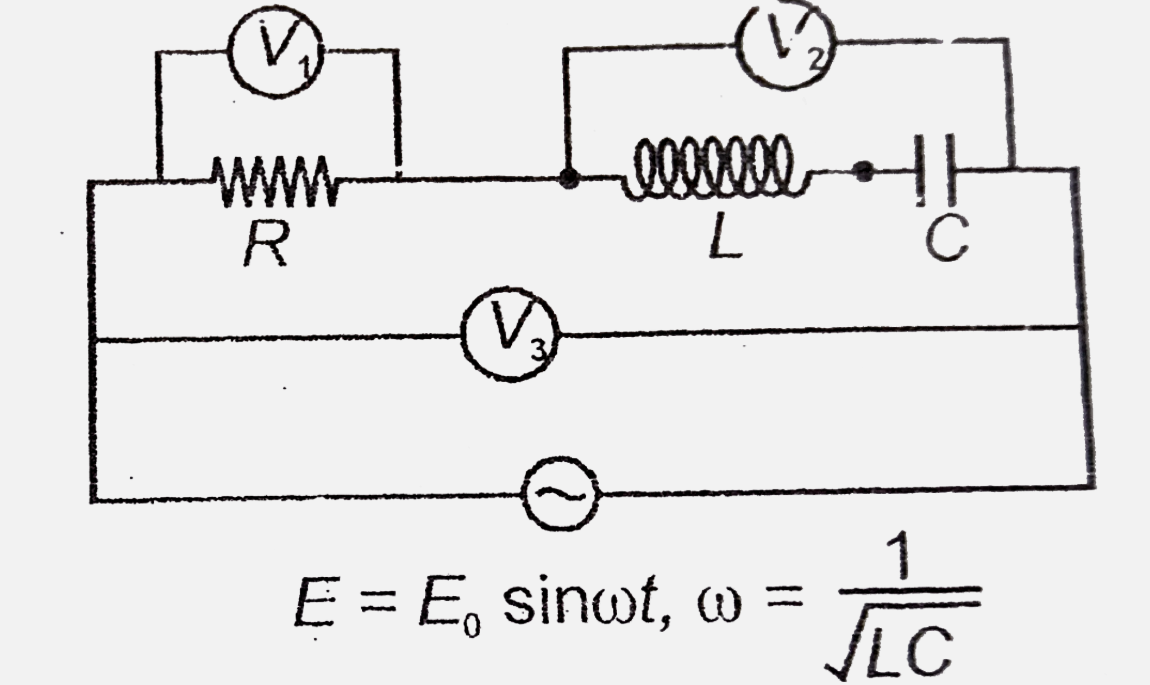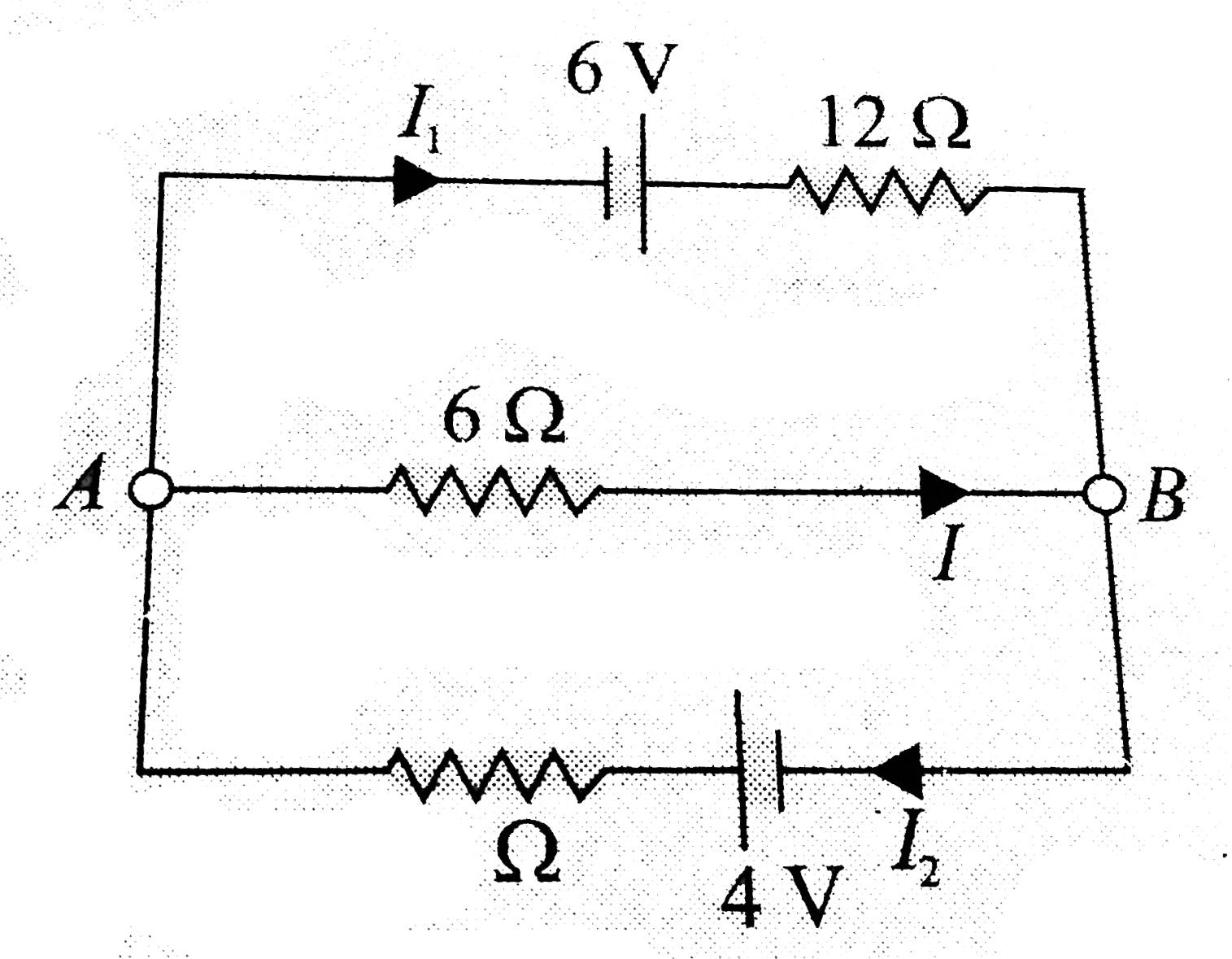In the circuit, the battery is ideal. A voltmeter of inifinite resistance is connected in turn across R1 and R2, giving reading of V1 and V2 respectively.
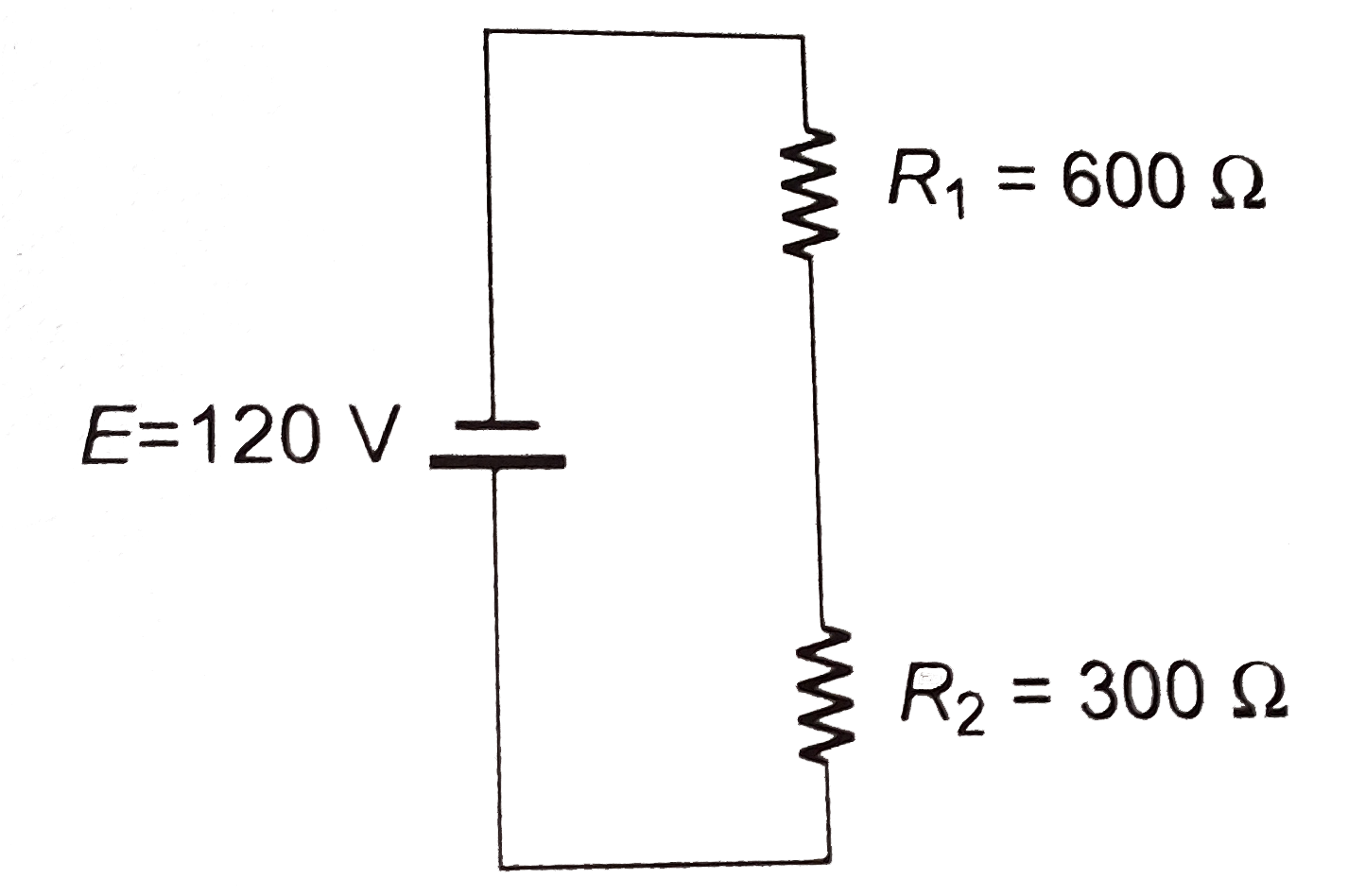 .
.
(i) V1=80V
(ii) V1=60V
(iii) V2=30V
(iv) V2=40V.
(i),(ii)
(ii),(iii)
(iii),(iv)
(i),(iv)
The correct Answer is:D
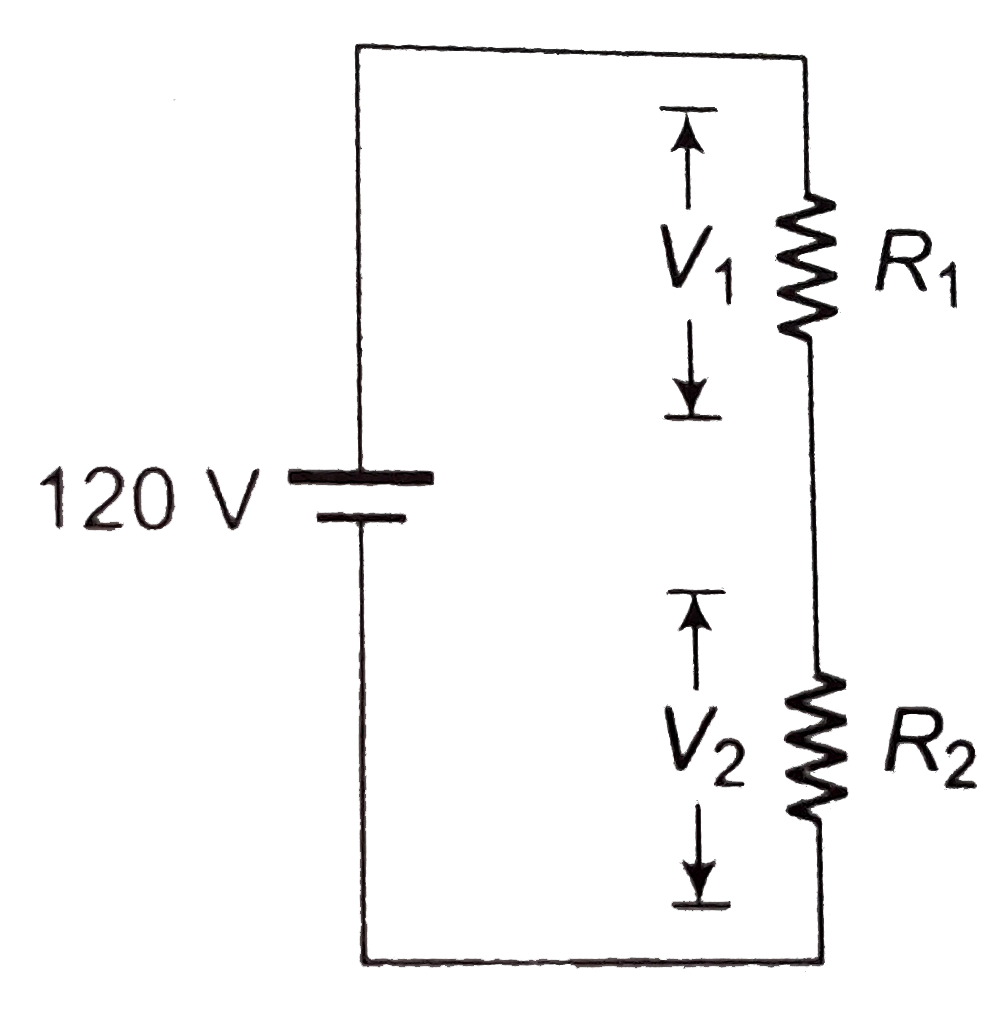
V1=R1R1+R2×120=600600+300×120=80V
V2=120−V1=120−80=40V.
Topper's Solved these Questions
Similar Questions
Knowledge Check
- Question 1 - Select One
A voltmeter of resistance 600Ω when connected in turn across resistances R1 and R2 gives readings of V1 and V2, respectively. If the battery is ideal, then
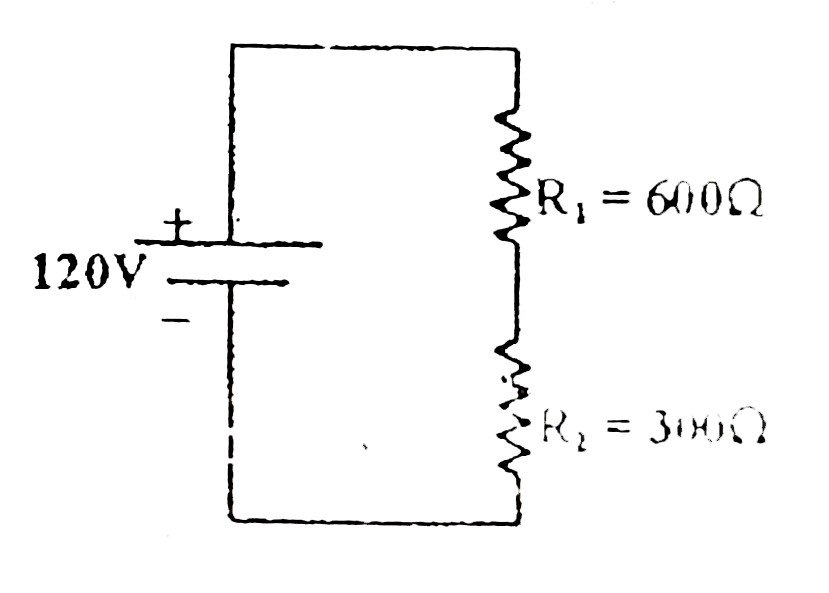 AV1=60VBV2=30VCV1=45VDV2=75V
AV1=60VBV2=30VCV1=45VDV2=75V - Question 2 - Select One
In the circuit shwon in figure, ammeter and voltmeter are ideal. E=4V,R=15Ω and r=1Ω, then reading of ammter (in A) and voltmeter (in V) respectively are:
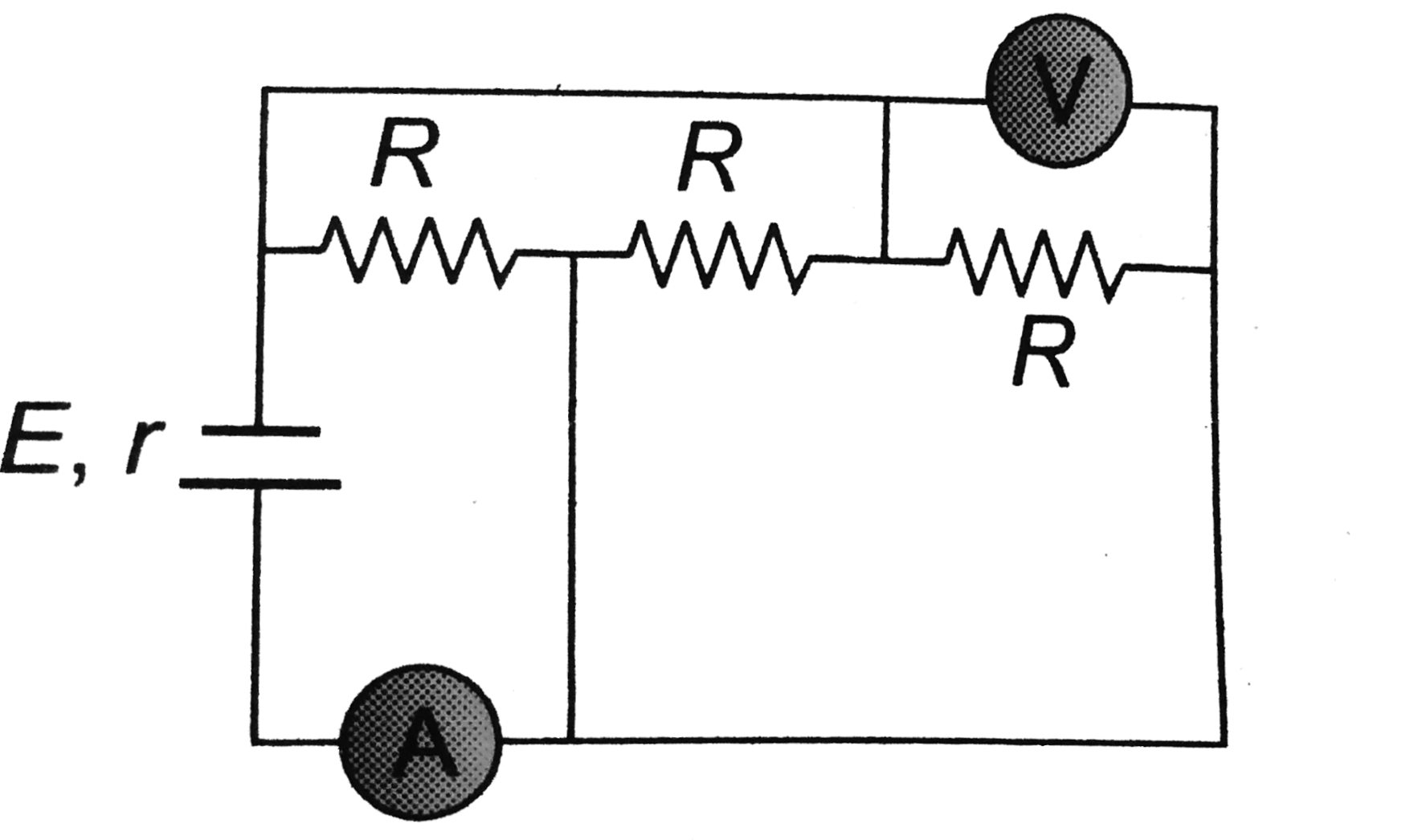 A2/3,11/3B2/3,10/3C10/3,2/3Dnone of these
A2/3,11/3B2/3,10/3C10/3,2/3Dnone of these - Question 3 - Select One
An ammeter A, a voltmeter V and a resistance R are connected as shown in the figure. If the voltmeter reading is 1.6V and the ammeter reading is 0.4A, then R is
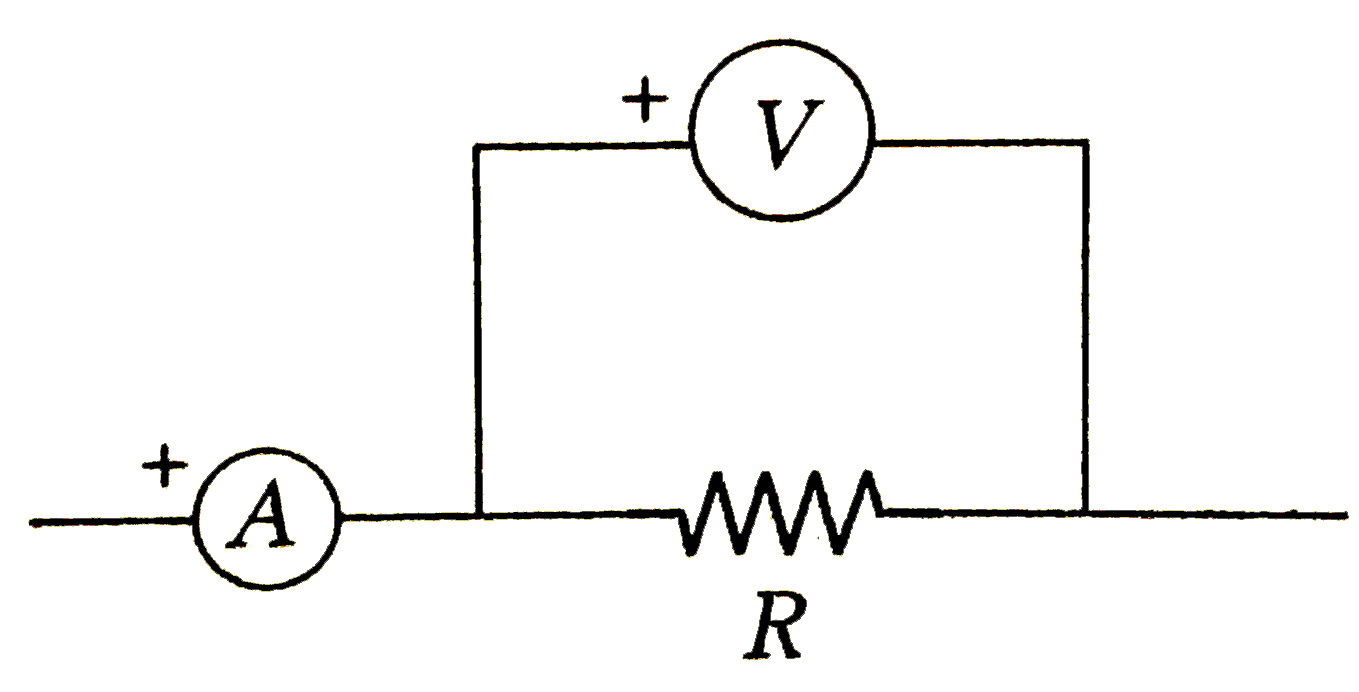 Aequal to 4ΩBgreater than 4ΩCless than 4ΩDbetween3Omegaand4Omega
Aequal to 4ΩBgreater than 4ΩCless than 4ΩDbetween3Omegaand4Omega
In the circuit shown, each resistance is 2Ω. The potential V1 is an indicated in the circuit. What is the magnitude of V1 in volt ?
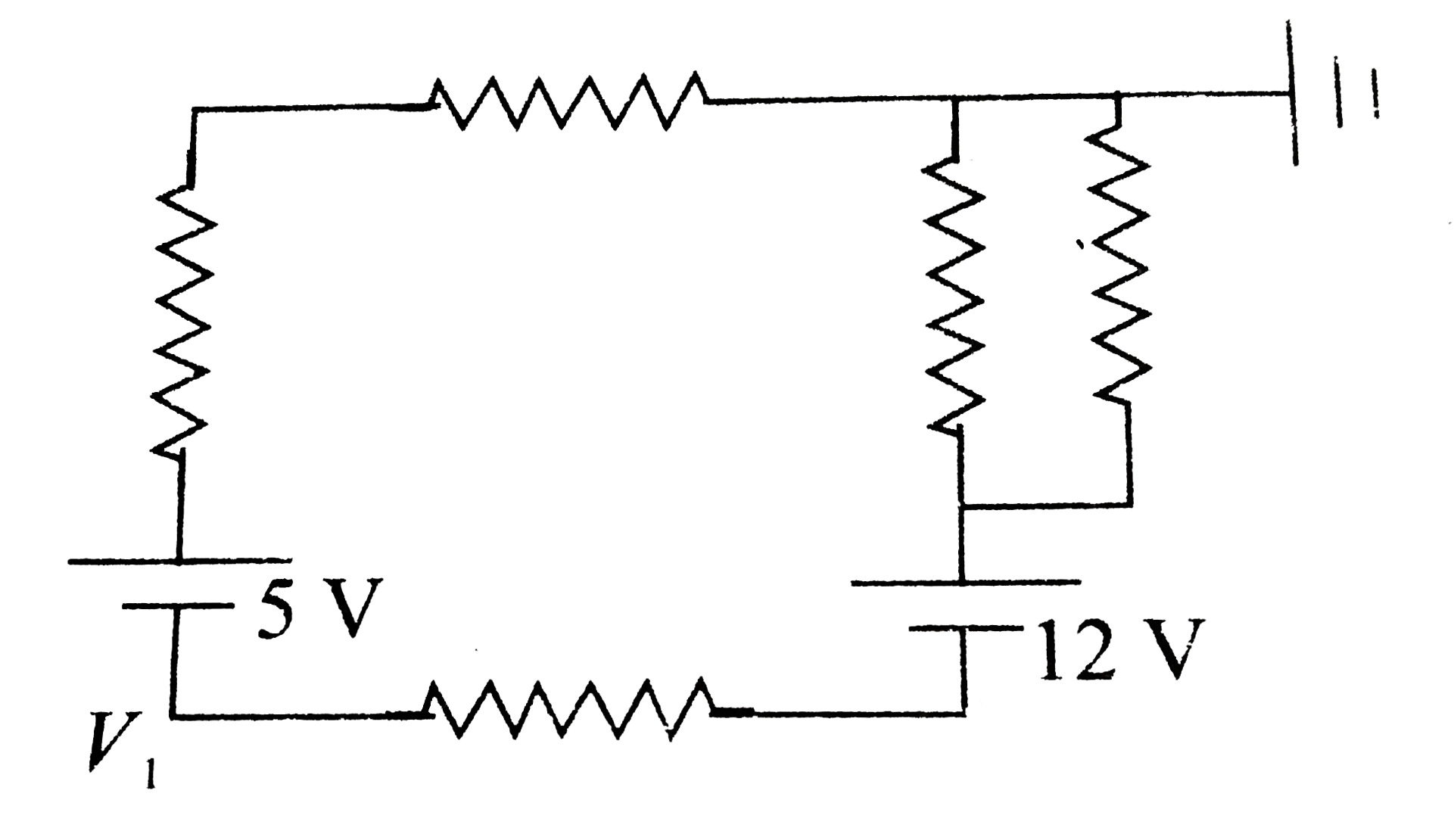 View Solution
View Solutionin the circuit shown in the figure, each battery is of 5 V and has an internal resistance of 0.2 Omega What is the reading of the ideal voltmeter V
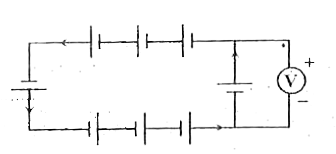 View Solution
View SolutionIn the circuit shown below, each battery is 5V and has an internal resistance of 0.2 ohm.
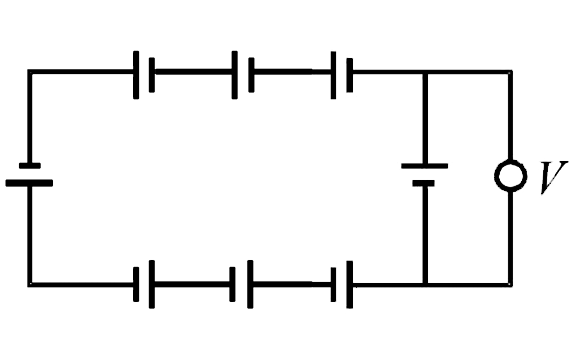
The reading in the ideal voltmeter V is .View SolutionIn the circuit shown in figure a current I=600μA enters through A and leaves through B. Reading of the identical voltmeters V1andV2 are 20Vand30Vrespectively. find R.
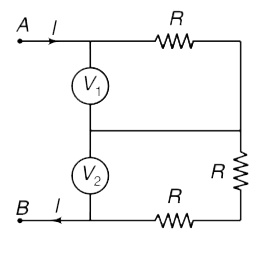 View Solution
View SolutionIn the given circuit the R.M.S values of voltages across the capacitor C, inductor L and resistor R1 are 12V, 10V and 5 V respectively. Then the peak voltage across R2 is
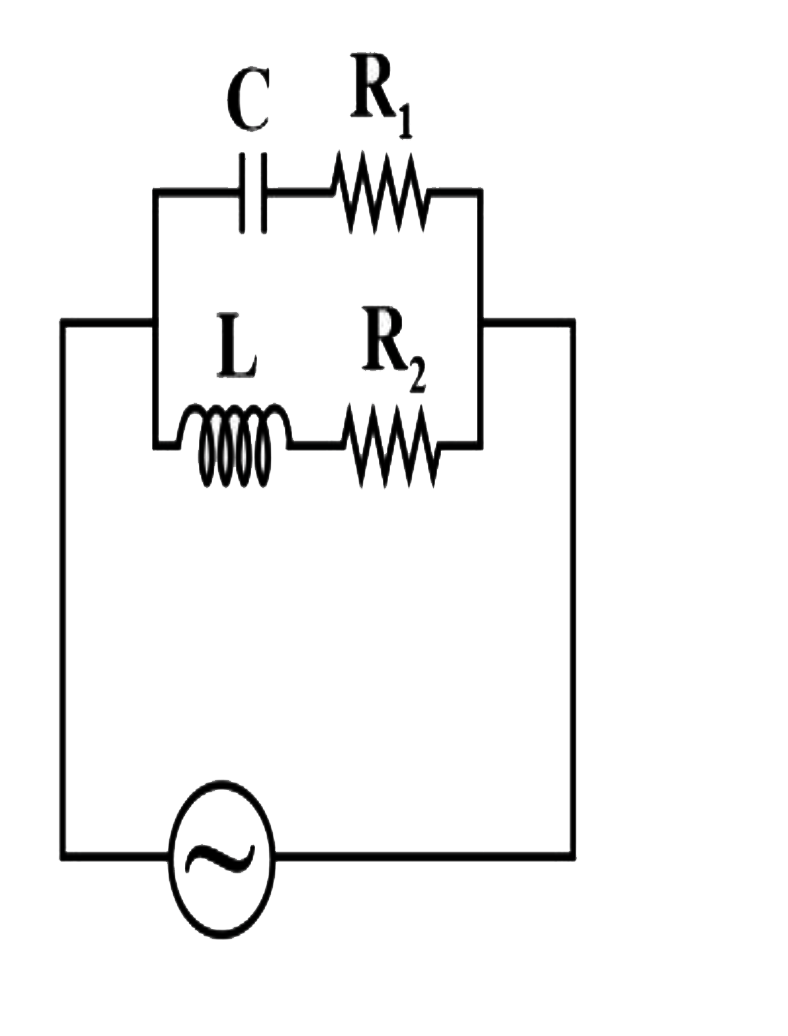 View Solution
View Solution


